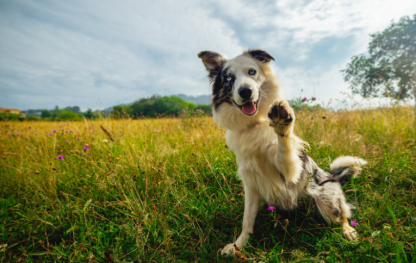Understanding Canine Body Language: Decoding Your Dog’s Signals
Dogs may not speak our language, but they’re always communicating. From the wag of a tail to the tilt of a head, every movement your dog makes is a part of their emotional vocabulary. Learning to read these signals not only deepens your bond—it helps you respond with empathy, confidence, and care.
For women who view their pets as beloved companions, understanding canine body language is a powerful way to strengthen trust and ensure your dog feels safe, seen, and supported.
Here’s a closer look at how dogs express themselves—and what they might be trying to tell you.

1. The Tail: More Than a Wag
Contrary to popular belief, a wagging tail doesn’t always mean a happy dog. The speed, direction, and height of the wag all offer clues.
- High, stiff wag: Alert or agitated—often seen before barking or guarding
- Low, slow wag: Submissive or unsure
- Fast, full-body wag: Excited and friendly—especially if the hips are wiggling too
- Tucked tail: Fear, anxiety, or submission
Always look at the tail in context with the rest of the body.
2. Ears, Eyes, and Head Movements
Facial expressions and head posture can reveal a lot about your dog’s comfort level.
- Perked ears, forward stance: Curious or focused
- Pinned-back ears: Nervousness, fear, or submission
- Soft eyes and blinking: Calm and content
- Wide eyes (whale eye): Stress or discomfort—especially if you see the whites
- Head tilting: Often a sign of curiosity or trying to understand you
3. Body Posture: Confidence vs. Concern
A dog’s posture is like their emotional posture—how they hold themselves shows how they feel in a space.
- Loose, relaxed body: Comfortable and safe
- Stiff, forward-leaning stance: Tension, potential aggression or guarding
- Cowering, hunched body: Fear or submission
- Play bow (front down, rear up): Friendly and ready for play
If your dog is freezing or showing a sudden change in posture, it could signal that they’re feeling threatened or overwhelmed.
4. Vocal Cues + Mouth Signals
While barking is obvious, subtle vocalizations and mouth movements offer insight too.
- Yawning or lip licking (outside of mealtime): Stress or discomfort
- Panting (without exertion): Anxiety or heat
- Growling: A warning—not always aggression, but a clear signal to pause and assess
- Open mouth, relaxed tongue: Content and calm
Never punish a dog for growling—it’s their way of expressing discomfort before escalating. Listen, and look for what’s triggering the response.

Final Thoughts
Dogs speak volumes with their bodies. By learning to observe and interpret their signals, you create a deeper connection rooted in mutual respect and understanding.
When your dog feels heard—even without words—they’ll trust you more, and you’ll navigate life together with more ease and joy.





